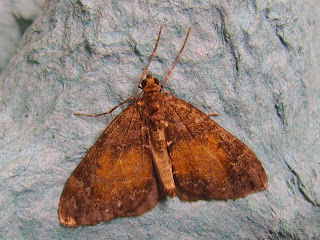North Berwick beach
Birdwise it was quite quiet, but I did record my first Turnstones of the trip (20+), feeding with at least 3 Purple Sandpipers (year tick) on the rocks below the Scottish Seabird Centre. Other waders present on the beach were Oystercatcher, Redshank, Curlew and a couple of Ringed Plovers. Both Grey and Pied Wagtails were feeding on the seaweed, whilst Starlings and House Sparrows were present on the nearby houses. Out on the sea were a couple of Red-breasted Mergansers, dozens of Eider Ducks, including several males trying to attract the attention of the females with their amazing "oooh,oooh" calls (listen here), a stunning 43 Shags feeding in the bay, along with Black-headed, Common, Lesser Black-backed and Great Black-backed Gulls.
On the drive back home, we stopped off at Bamburgh and had half an hour on the beach by Stag Rocks. I was hoping to catch up with some grebes or divers, and a Bonaparte's Gull that was reported yesterday, but no such luck. I did, however, see 5 juvenile Gannets "plunge diving" into the sea, 20+ Eider Ducks, 40+ Turnstones, 5 Purple Sandpipers and Common and Black-headed Gulls.
Year List update:
186 - Purple Sandpiper
Update: the Bonaparte's Gull was spotted about an hour after I'd left!!!!!




























